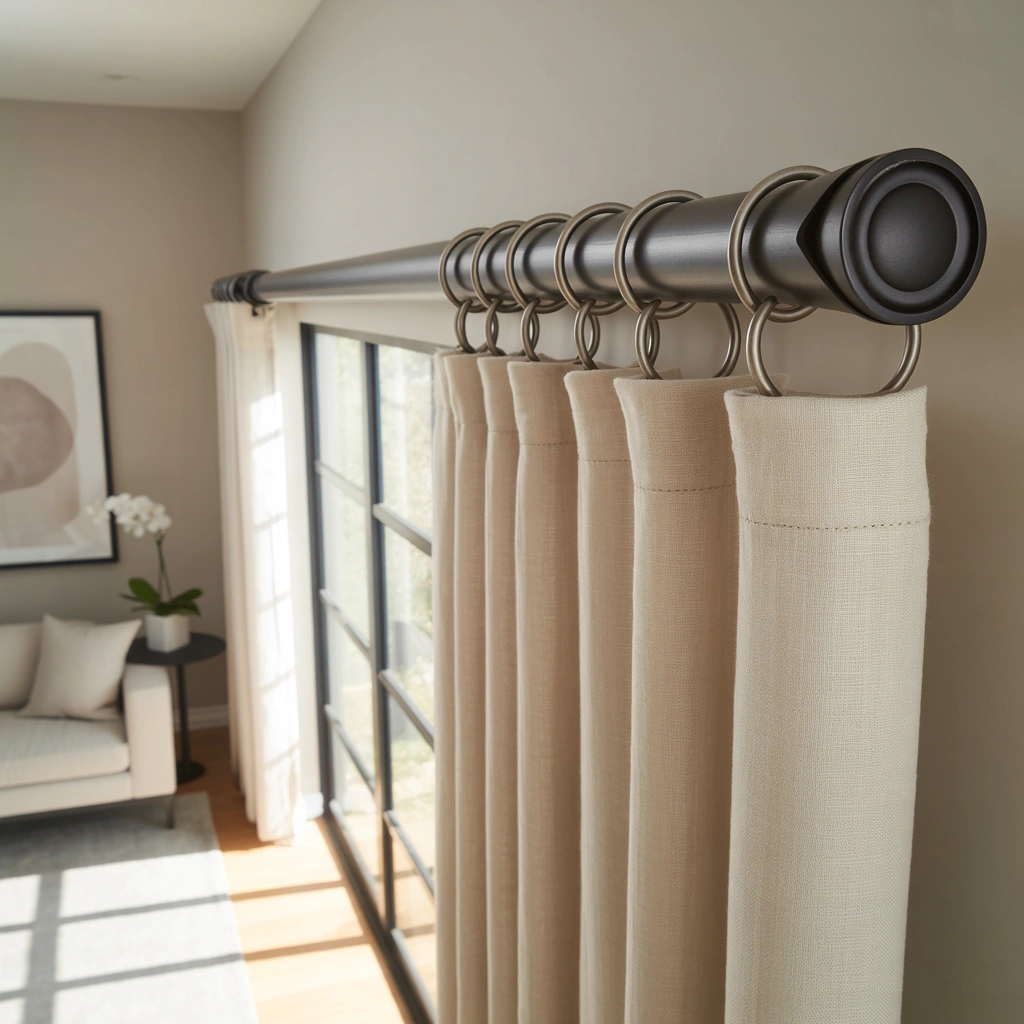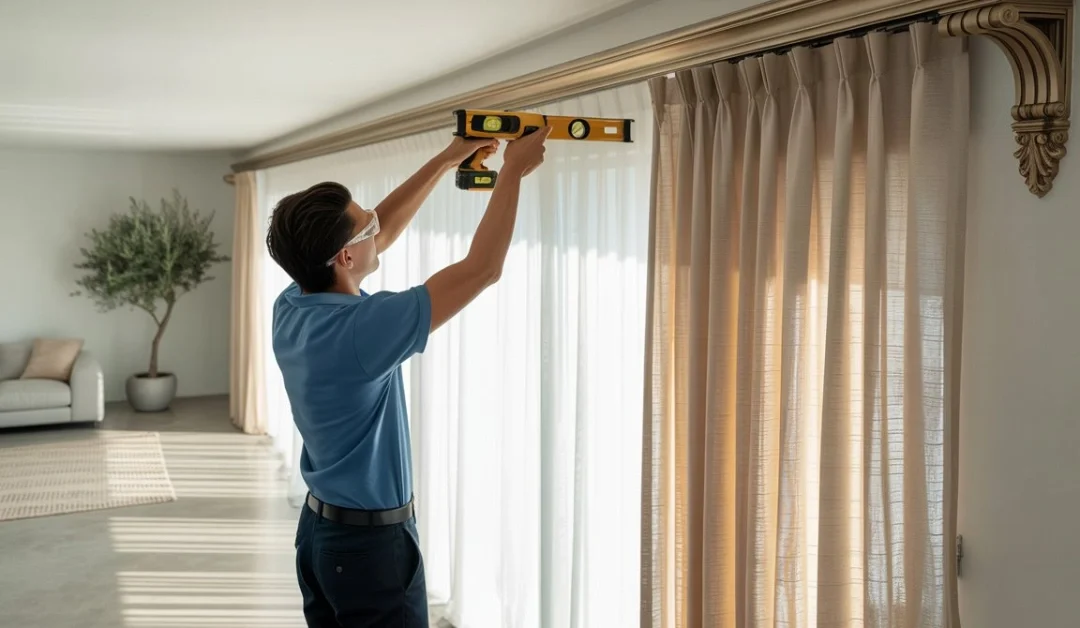Curtains are not just decorations—they are tools for controlling light, privacy, and even room temperature. If curtains are installed poorly, they may fall or look messy.
If they are not cleaned regularly, dust builds up, and they lose their color. Proper installation and care make curtains last longer and keep homes looking tidy.
1. Why does Curtain Installation Matter?

Curtains that are hung correctly block sunlight better and look neat. If brackets are loose or rods are too thin, curtains might tilt or slide off.
How does regular maintenance affect curtain lifespan?
Dust, dirt, and sunlight can fade fabrics and cause tears. Cleaning curtains every few months keeps them soft and fresh.
2. Part 1: How to Install Curtains Like a Pro
What tools do I need to install curtains?
Before starting, gather these tools:
- Curtain rod or track: Choose based on window size and curtain weight.
- Screws and wall anchors: For plaster or drywall.
- Drill: To make holes for screws.
- Measuring tape: To check window width and rod length.
- Level: To ensure the rod hangs straight.
How do I install curtains step by step?
Measure the window
- Curtains should be 2–3 inches wider than the window frame to cover gaps.
- For floor-length curtains, measure from the rod to the floor.
Mark where the brackets go
- Use a pencil to mark spots on the wall or ceiling.
- Brackets should be placed 4–6 inches beyond the window frame for full coverage.
Drill holes and attach brackets
- If walls are plaster or concrete, use a masonry bit.
- Insert wall anchors if needed, then screw brackets into place.
Put the curtain rod in the brackets
- Slide the rod into the brackets.
- Use a level to check if it’s straight.
Hang the curtains
- Slide curtains onto the rod or clip them in place.
- Adjust rings or hooks so the fabric falls evenly.
How do I hang heavy curtains without sagging?
Heavy curtains need extra support:
- Use metal rods or thick wooden poles (1.5 inches in diameter or more).
- Add middle brackets for rods longer than 6 feet.
- For very heavy fabrics (like velvet), install ceiling batten mounting.
How do I install curtain rods correctly?
A crooked rod leads to uneven curtains. Always use a level during installation. If the rod is too short, extend it with a telescoping rod.
3. Part 2: Choosing the Best Curtain Rods

What types of curtain rods are available?
Tension rods:
- Held in place by pressure between walls.
- Best for light curtains and temporary setups.
Track rods:
- Metal or plastic tracks with gliders for smooth opening/closing.
- Great for sliding doors or large windows.
Ceiling-mounted rods:
- Installed on the ceiling for floor-to-ceiling curtains.
- Adds height and drama to small rooms.
Decorative rods:
- Brass, iron, or wood rods with finials (decorative ends).
- Match the style of your room (modern, rustic, etc.).
Which Curtain Rods Work Best for Heavy Curtains?
For thick or heavy curtains, choose:
- Steel or aluminum rods (stronger than plastic).
- Brackets with reinforced screws.
- Telescoping rods for adjustable length.
Check out our guide to the best curtain rods for heavy curtains for product recommendations.
Are metal or wood curtain rods better?
- Metal rods: Strong and durable, ideal for heavy fabrics.
- Wood rods: Look elegant, but may bend under weight.
What kind of rod should I use for thick or heavy fabric?
Thick fabrics like blackout curtains or velvet require sturdy hardware. Avoid tension rods—they cannot hold much weight.
4. Part 3: Cleaning & Maintaining Your Curtains
How often should I clean my curtains?
- Dusting: Once a week with a vacuum.
- Deep cleaning: Every 6 months.
What’s the safest way to clean curtains without damaging them?
- Vacuum with a soft brush attachment.
- Spot clean stains with mild detergent and water.
- Steam clean for wrinkles and dust mites (keep the steamer 6 inches away).
How do I dust, vacuum, or spot clean curtains effectively?
- Dust curtains while they are still on the rod.
- Use a vacuum with a “delicate” setting.
- For stains, dab gently—do not rub.
How do I clean different curtain fabrics like velvet, silk, or polyester?
- Velvet: Use a velvet brush to keep the texture soft.
- Silk: Dry clean only.
- Polyester: Can be machine washed on a gentle cycle.
Can I machine wash curtains safely?
Some curtains can be washed in a machine. Check the care label first. Use cold water and air dry to avoid shrinking.
5. Final Thoughts
What are the key takeaways for installing and maintaining curtains?
- Use strong rods for heavy curtains.
- Clean curtains weekly and deep clean them twice a year.
- Follow care labels for washing.
Why is proper care essential for beautiful, long-lasting curtains?
Well-cared curtains make rooms look nicer and save money by lasting longer.
6. Frequently Asked Questions (FAQs)
Yes, but only by ½ inch. Too long, and they get dirty.
Clean them often and avoid direct sunlight for long periods.
Too many clips or rings can weigh them down. Remove the extra ones or tighten the rod.
Yes, but test a small area first. Steam removes wrinkles and kills dust mites.
Ceiling-mounted rods are used for floor-length curtains. Drill holes into the ceiling and attach brackets. For a tutorial, see roller blinds vs venetian vs vertical blinds.
Gently twist and pull hooks from the curtain top. If stuck, use pliers.

